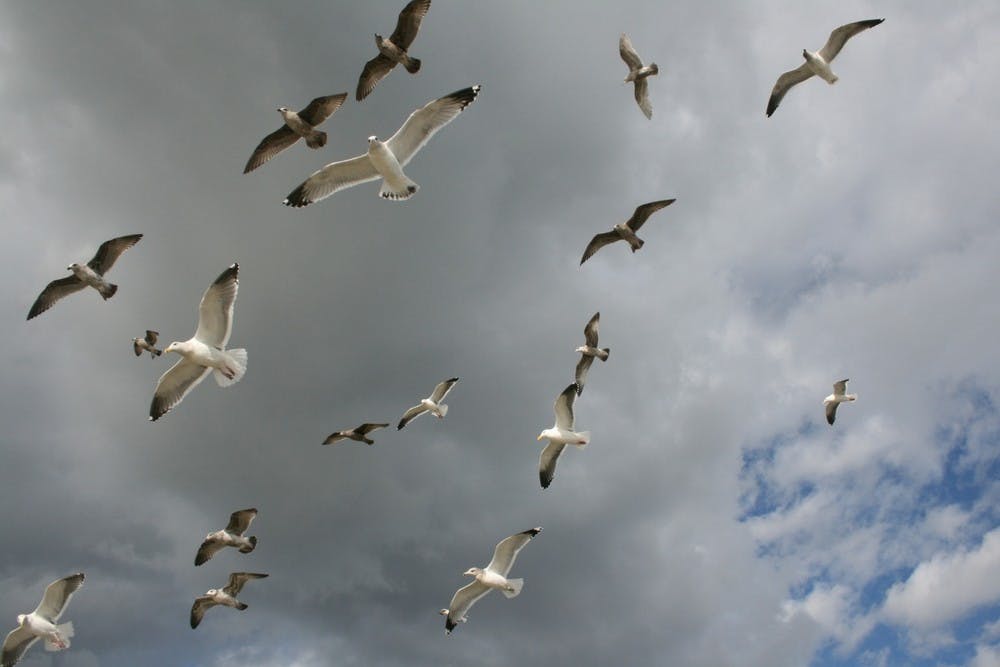Seagull droppings, best known for ruining a day at the beach, have found something else to ruin—aquatic ecosystems.
A pair of Nicolas School of the Environment researchers have discovered that an estimated 1.4 million seagulls—which are known to eat at landfills—contaminate nearby bodies of water. In a study published in the journal Water Research, researchers Scott Winton and Mark River found that due to the birds' consumption of trash, their waste contains large amounts of nitrogen and phosphorus, which can kill underwater organisms and make it hard to treat the water for drinking.
“The gulls are effectively short-circuiting environmental regulations of landfills," said Winton. "Eating trash causes nutrients to pile up, diminishing water quality."
Winton explained that the nitrogen and phosphorus deposits contained in the gulls’ droppings promote algae growth. Through a process known as eutrophication, the algae then dies and is broken down by other organisms which depletes the water of the oxygen necessary for fish and other aquatic animals to survive.
“Because of this oxygen depletion, not only are fish dying, but there is a larger issue of water quality,” Winton said.
According to the study, local governments throughout North America have spent roughly $100 million in nutrient offset credits to address the issue of water quality. But Winton said more must be done to prevent seagulls from gathering at landfills.
“One of my favorite control methods is unleashing predation on gulls, so they fly away from the landfills and are forced to feed elsewhere," he said.
He added that both government-funded and private consultants have investigated seagull control, but there are no purely scientific studies that have examined the issue.
Winton and River’s research is among the only studies that track the transport of nutrients from landfills to nearby waters via seagulls.
Winton's area of research is biogeochemistry, which involves reviewing how different elements flow through ecosystems. He first became inspired to research the effect of seagull waste on water quality while on a bird-watching trip in the South Wake Landfill in Apex. He was hoping to spot a rare bird, but instead noticed a huge flock of seagulls fly over to nearby Jordan Lake after consuming the trash.
His observations led him and River to focus on Jordan Lake and Falls Lake in Durham. Jordan Lake is a source of drinking water and recreation for the Triangle. In the past, it has suffered from algae growth and problems with pollution.
The two researchers concluded that approximately 50,000 ring-billed gulls added nearly 1.2 tons of phosphorous to Jordan Lake. They were then able to scale up their findings to estimate how seagulls affect other reservoirs and lakes to show that other water bodies around the world suffer from the same problem.
"We looked at bird databases and realized this is a phenomenon bigger than just at Jordan Lake,” Winton said. "We want to inspire local government not only in North Carolina, but throughout the country, to investigate if they have similar problems with gulls."
Get The Chronicle straight to your inbox
Signup for our weekly newsletter. Cancel at any time.

